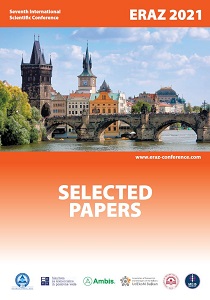Analysis of the Number of European Union Citizens Working in the Regions of Slovakia in the Period 2013-2019
Analysis of the Number of European Union Citizens Working in the Regions of Slovakia in the Period 2013-2019
Author(s): Ľubica Hurbánková
Subject(s): Human Resources in Economy, Socio-Economic Research
Published by: Udruženje ekonomista i menadžera Balkana
Keywords: Number of working EU citizens; Contribution method; Suslov´s coefficient
Summary/Abstract: The paper aims to analyse the regions of Slovakia based on the number of working citizens of the European Union. The contribution method is used to find out in which region the number of working foreigners increased the most, and in which the least. Suslov´s coefficient of similarity of structures is used to analyse changes in the structure of the analysed indicator. From the results of the realized analysis we found out that the number of working foreigners in Slovakia increased the most in the year 2014 compared to 2013, by 63.40%. Bratislava Region (16.92%), Žilina Region (11.37%) and Prešov Region (9.63%) contributed the most to this increase, while Košice Region (0.91%) and Trenčín Region (1.07%) contributed the least. In the year 2019 compared to 2018 was recorded an increase of only 6.10%. Suslov’s coefficient of similarity of structures acquires the value 0.0230, which means a high degree of similarity of structures of the number of working foreigners in the years 2013 and 2019.
Book: ERAZ 2021 / 7 - Knowledge-Based Sustainable Development – SELECTED PAPERS
- Page Range: 39-45
- Page Count: 8
- Publication Year: 2021
- Language: English
- Content File-PDF

